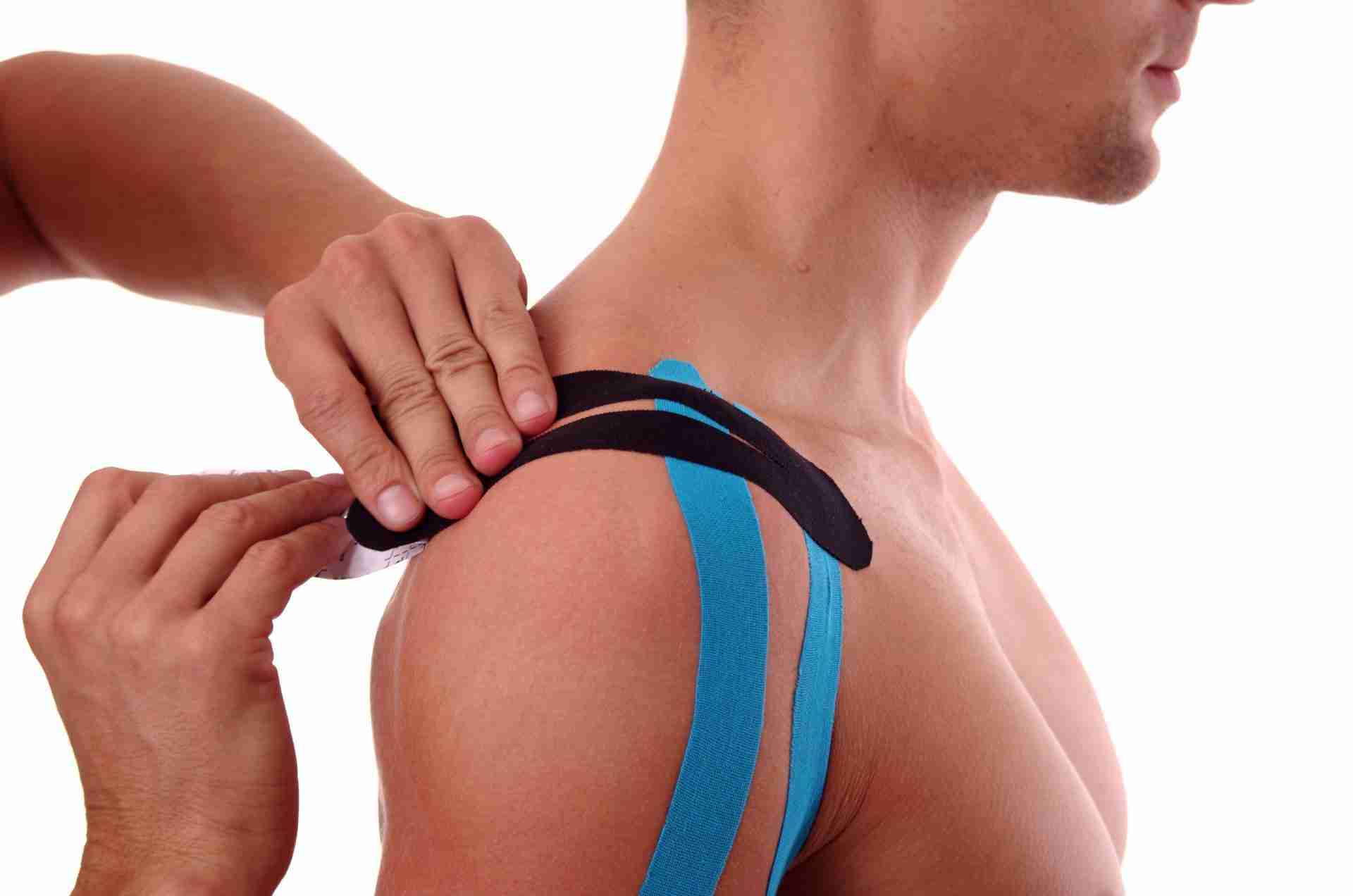How Does Kinesiology Tape Work?
Kinesiology tape, also known as elastic therapeutic tape or k tape, is a type of sports tape that has become increasingly popular in recent years for its supposed ability to alleviate pain, reduce inflammation, and enhance athletic performance. In this post, we set out to provide answers to the question “How Does Kinesiology Tape Work?”
While the evidence supporting these claims is mixed, there is some scientific research that suggests that kinesiology tape may have therapeutic benefits for certain types of injuries and conditions. In this article, we will explore how kinesiology tape works and its potential benefits for athletes and non-athletes alike.
What Is Kinesiology Tape?
Kinesiology tape was first developed in the 1970s by Dr. Kenzo Kase, an American trained chiropractor and acupuncturist. It was designed to mimic the properties of human skin, including its elasticity and thickness, in order to provide support and stability to muscles and joints without restricting movement.
Kinesiology tape is made from a thin, elastic material, typically cotton or a synthetic blend, with an adhesive backing that allows it to adhere to the skin. It is designed to stretch in all directions, providing a range of motion that is similar to the natural movement of the body.
How Does Kinesiology Tape Work?
The mechanisms behind the purported benefits of kinesiology tape are not fully understood, but there are several theories that attempt to explain its effects. Here are some of the most commonly proposed mechanisms:
- Neurosensory Effects: Kinesiology tape is believed to stimulate the sensory receptors in the skin and muscles, which can alter the perception of pain and improve proprioception (the ability to sense the position and movement of the body). This can lead to increased muscle activation and improved movement patterns, which can enhance athletic performance and reduce the risk of injury.
- Mechanical Effects: Kinesiology tape is also thought to have mechanical effects on the body, including the ability to provide support and stability to muscles and joints. By applying tension to the tape, it can lift the skin and underlying tissue, creating a space that can reduce pressure and inflammation in the affected area. This can also increase blood flow and lymphatic drainage, which can promote healing and reduce swelling.
- Psychological Effects: Finally, there may be psychological effects of kinesiology tape that contribute to its perceived benefits. For example, wearing the tape may increase confidence and reduce anxiety, which can lead to improved athletic performance and a more positive mindset.
Potential Benefits of Kinesiology Tape
While the scientific evidence supporting the use of kinesiology tape is limited, there are some potential benefits that have been suggested in various studies and anecdotal reports. Here are some of the most commonly cited benefits:
- Pain Relief: Kinesiology tape is often used to alleviate pain in various parts of the body, including the back, knees, shoulders, and neck. It is thought to work by stimulating the sensory receptors in the skin and muscles, which can alter the perception of pain and provide a sense of relief.
- Improved Athletic Performance: Kinesiology tape is often used by athletes to enhance their performance and reduce the risk of injury. It is thought to work by providing support and stability to muscles and joints, improving proprioception and muscle activation, and reducing muscle fatigue.
- Reduced Swelling and Inflammation: Kinesiology tape is believed to have a mechanical effect on the body, lifting the skin and underlying tissue and creating a space that can reduce pressure and inflammation in the affected area. This can lead to reduced swelling and improved circulation, which can promote healing.
- Rehabilitation: Kinesiology tape can be used as part of a rehabilitation program to aid in the recovery from injury or surgery. It can provide support and stability to the affected area, reduce pain and inflammation, and promote healing and tissue regeneration.
Conclusion
In this article, we have presented a brief explanation of how kinesiology tape is claimed to work. We have also explained some of the purported benefits associated with the use of this tape.
It should be emphasized that kinesiology tape needs to be applied properly in order to realize its purported benefits. Ideally, the tape should be applied by someone with appropriate training for the job. If this is not possible, guidance may be obtained from our page on how to apply this tape.
Finally, we would advise anyone suffering from an injury to consult with a doctor before making a final decision on the appropriate course of treatment.







